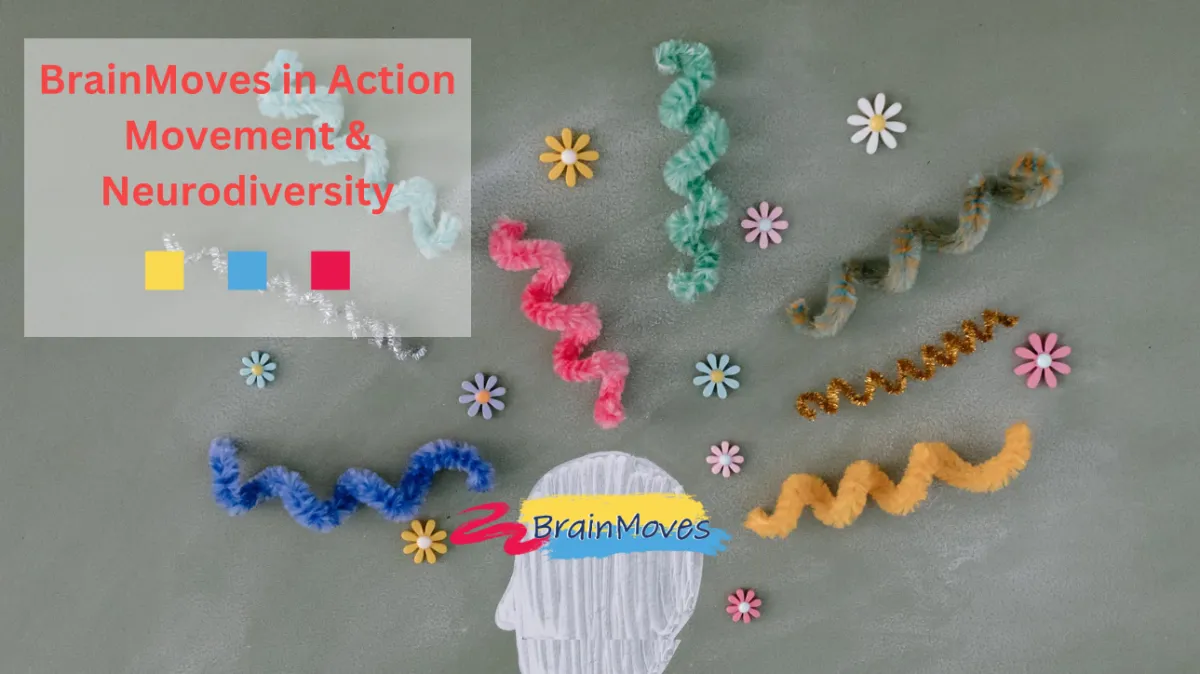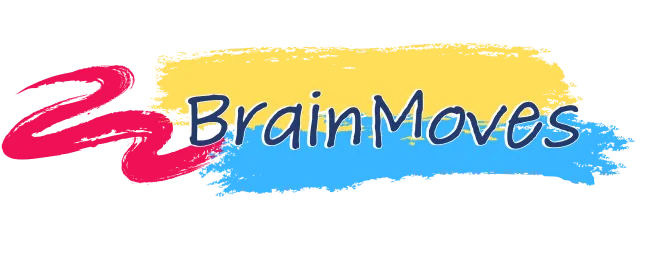
BrainMoves in Action: Movement & Neurodiversity
It’s estimated that one in five individuals has some form of neurodiversity, and as general population awareness of diversity grows, accommodations, techniques, and lifestyle choices that help people with diverse brains flourish become increasingly important.

Often, clients come to psychotherapist and founder of BrainMoves, LLC, Diane Malik, MA, with children who are showing signs and symptoms of what might be later diagnosed as ADHD, Autism, or OCD. From Diane’s perspective, many of these symptoms are signs of dysregulation in the brain and body that are out of balance, whether that's innate, temporary or permanent.
While these traits are not signs that a person needs to be or even can be “cured,” often the adult or child is seeking help because the current coping mechanisms and stress level are unacceptable and it is affecting school, work, and their home life.

The individual diagnosis code matters less and less; what is important is whether you, your child, or both are feeling well-regulated, with positive, healthy coping mechanisms and good habits for resetting yourself when feeling exhausted or overwhelmed. It’s a little surprising that one of the symptoms of undiagnosed neurodiversity in adults is autoimmune issues because the nervous system has been trying to process an onslaught of information, and the floodgates of stimuli have been open for years. At some point, the body begins to have stress reactions.
What does this have to do with preschoolers and kindergartners and brain development? Teaching your child to regulate, regardless of how their brain is wired, is an incredible gift. Helping the child learn well, even if they learn differently, sets them up for success in both school and work and social environments. Helping children establish boundaries and understand when they need to retreat and reset is also a valuable life skill. It’s one of the reasons why so many parents who initially use BrainMoves with their children find that it helps them as well. Why does it work? First, it doesn’t require a diagnosis. It helps people who might be informally considering themselves to have ADHD, show autistic symptoms, or show elements of OCD.
It supports many positive neurodiverse coping mechanisms. The movements and many common stims actually overlap quite a bit; you might even imagine them as stims that are targeted for specific ways in which you’re helping your body balance and cope.

Another way BrainMoves helps is by providing a necessary pause in the overstimulation that is so common with neurodiverse brains. One of the characteristics of neurodiversity is what neuroscientists call “sensory gating issues.”
When a neurotypical brain receives a stimulus—say, a dog barking—after three or four barks, a neurotypical brain will still notice it, but the brain will have filed it as not requiring action, not a threat.
A neurodiverse brain typically doesn’t shut off the reaction to the stimulus, so whether the dog has barked once or the dog has barked fourteen times, each bark is exactly as intense as the first.
The brain shouts,
“What was that?
Does it require action?
Is it an emergency?” over and over again.
If this sounds like you, I bet you've become stressed just listening to or reading this line.
And if you are stressed by this, there is a good chance your child has sensory gating challenges, as well, as neurodiversity is highly inheritable. The neurodiverse body is exhausted by this process, the constant peppering of stimuli. No wonder school, work, and social situations can be so draining. Stress and cortisol levels are higher. The ability to focus is affected because those stress hormones are shouting, “Could be a problem! Could be a problem!” So, of course, if that person is constantly being tipped into hyper-awareness by different sounds, colors, or even textures and smells, the individual’s ability to focus and their overall level of coping with negative stimuli are decreased.

BrainMoves can help provide the regulation that allows children and adults to better sort sounds, process their body in space, understand visual shapes in preparation for reading, or understand words to read more comfortably, as well as movements that help with the tension associated with trying to power through a neurotypical school or work schedule.
The BrainMoves movements are easy to learn and easy to do. There’s no one right way to do BrainMoves. BrainMoves movements can be done in a sequence specific to you, your child, and the moment that you’re both living. It can be as little as five or ten minutes a day, and as an adult, you can take a time-out in your own day and do several BrainMoves whenever you feel you need more regulation.
So if you’re the neurodiverse parent of a hyperactive child or the neurotypical parent of a neurodiverse child who sees the world in rainbows and excitement, BrainMoves can help smooth the rough edges and help you and your child have a more positive, healthy, and peaceful experience.
Ready to learn?
Signing up for the self-paced BrainMoves course is simple, convenient, and more affordable than ever.
Fun, Interactive Videos: Straightforward video Lessons quickly teach BrainMoves- movements designed just for preschoolers and kindergarteners.
- Sensory-Friendly Activities: Movements that help children feel grounded, calm, and aware of their bodies
- Parent/ Teacher Guidance: Simple instructions and ideas for making each activity successful for your unique child
- Lifetime Access: You can revisit activities as often as you like, building routines that grow with your child
If you’re ready to experience the benefits of BrainMoves for yourself or your family, just visit https://thebrainmovescourse.com/#custom-code-h8-M12CN4iJ to get started. The course is designed to fit your schedule, making it easy to learn and practice BrainMoves at your own pace.


